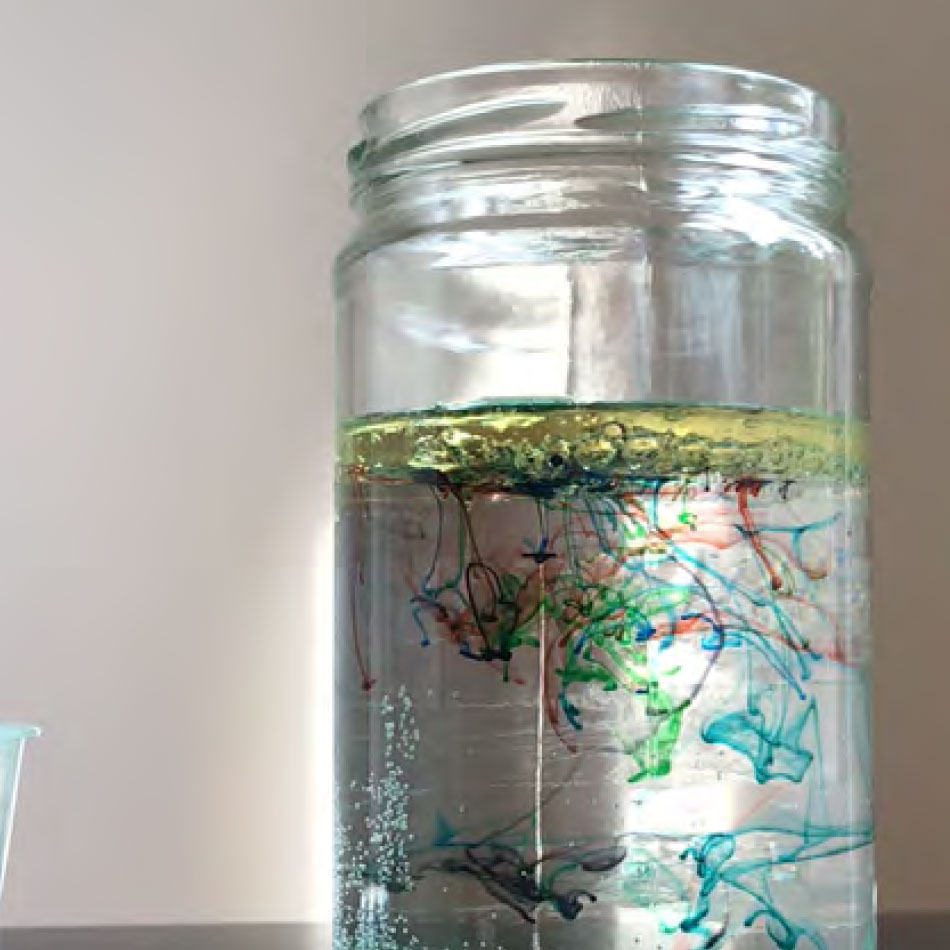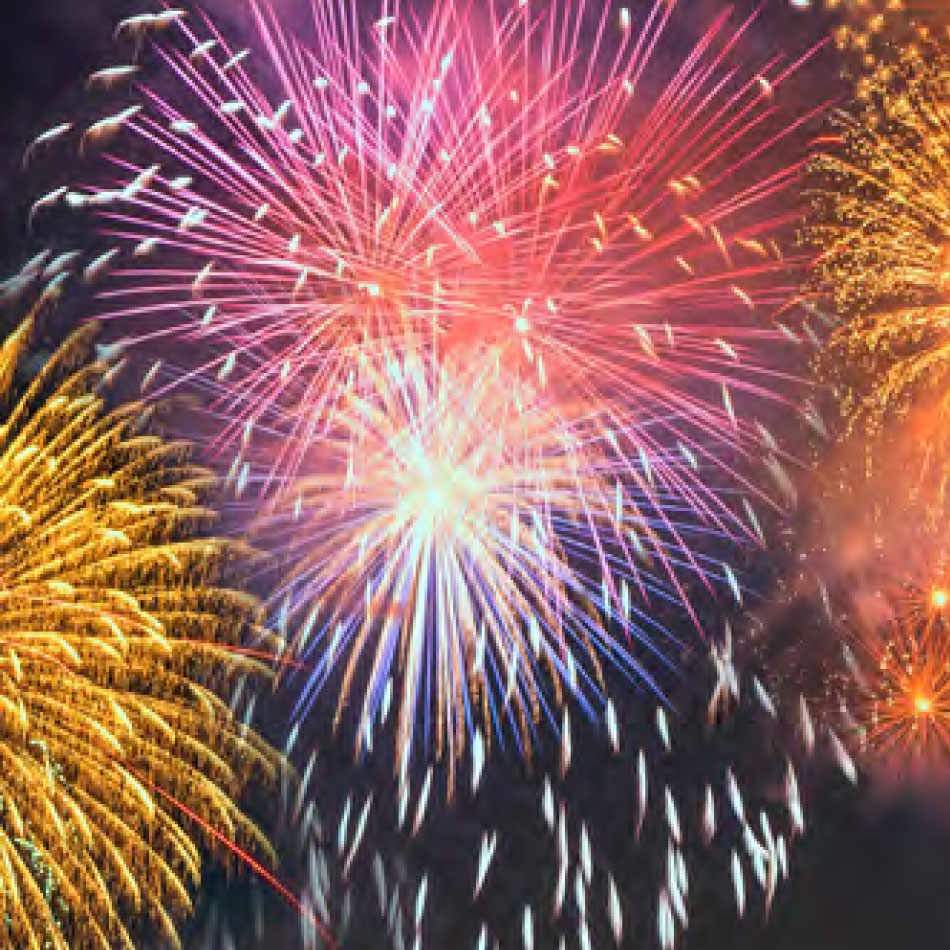Make Fireworks in a Jar
Experiment with immiscible liquids to create a colourful, slow-mo show in a jar.
Make Fireworks in a Jar
Experiment with immiscible liquids to create a colourful, slow-mo show in a jar.
Careful! Food colouring can stain.

Enjoy the fireworks!

Water and oil are immiscible, meaning they don’t mix.
Water (H2O) is made from two hydrogen atoms and one oxygen atom, and water molecules are polar—they have a partial negative charge from the oxygen atom and a partial positive charge from the hydrogen atoms. This causes water molecules to be attracted to each other, creating strong hydrogen bonds between them.
Oil is made up of hydrogen and carbon atoms, so they’re called hydrocarbons. Unlike water molecules, hydrocarbons are non-polar—electrons are evenly distributed across the molecules—and there is no positive or negative charge. The bonds holding the hydrocarbon molecules together aren’t strong enough to break the hydrogen bonds between the water molecules, and so can’t mix. We say oil is hydrophobic, or “water fearing.”
Food colouring is a water-based liquid, so it doesn’t mix with the oil. Instead, it forms small spheres within it. Food colouring, like water, is denser than oil—it has more atoms packed tightly together per volume than oil does—so droplets of food colouring sink to the bottom of the oil. So when the oil and food colouring are poured into the water, the oil floats to the top carrying the food colouring inside of it. But when the liquids settle, the food colouring sinks through the oil and enters the water.
That’s when things get fancy. The food colouring is denser than water, so it sinks to the bottom of the jar. As it sinks, it begins to mix and slowly dissolve into the water. As the dyes spread out, they leave a trail resembling fireworks.